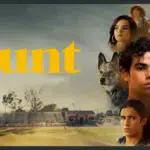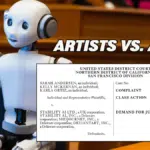A writer in Georgia has filed a new copyright lawsuit claiming that the time travel series “Timeless” infringes his “ChronoShift” book trilogy. The plaintiff’s theory of access is one for the ages.
I’ve already written a few articles here on Copyright Lately about substantial similarity, so it seems like as good a time as any to talk about “access,” which is the other building block of most copyright infringement claims.
Unless there’s direct evidence that a defendant has copied the plaintiff’s work, a copyright plaintiff will attempt to prove copying with circumstantial evidence. This generally requires that the plaintiff demonstrate (1) that the defendant had access to the plaintiff’s work and (2) that the two works share similarities that indicate copying.
Access is like the Jan Brady of copyright concepts. It certainly doesn’t get as much attention as substantial similarity. I think there are a few reasons for this. First, if the plaintiff’s work is widely available, access won’t be an issue worth fighting over. In other words, no one accused of infringing a Beatles song is going to spend any time disputing access.
The other reason access gets short shrift is because it’s often more straightforward and efficient for a defendant to argue that the two works are not substantially similar—a defense that’s increasingly raised via motion to dismiss at the start of a lawsuit. In order to avoid wading into factual disputes, a defendant will simply concede (for purposes of its motion only) that there was access, and will instead focus on the extent to which the works are substantially similar in their protected expression. If there’s no substantial similarity, access is irrelevant.
So, the real reason I decided to write about access now is because it gives me an excuse to discuss a new copyright infringement complaint filed this week in the Northern District of Georgia called Mason v. Sony Pictures Entertainment. The plaintiff, Bryan Zack Mason, alleges that the television series “Timeless,” which was produced by Sony and aired on NBC from 2016 to 2018, infringes his “ChronoShift” trilogy, a series of time travel novels published between 2011 and 2012. According to Mason’s complaint, both works feature a team of three protagonists who “travel through time fighting assassins and altering historical events.”
I’d imagine that the defendants in this new case will file a motion to dismiss that sidesteps the issue of access. The scattered similarities the plaintiff lists in his complaint appear to be largely cherry-picked from over a dozen different episodes of “Timeless,” and seem like pretty typical time travel fare. For example, the plaintiff contends that both works feature time travel wristwatches, and there’s a scene in both works in which the protagonists travel back to the assassination of Abraham Lincoln. (If there are any fellow “Twilight Zone” fans out there, you might remember that this was the plot of an episode from 1961 starring Russell Johnson, who would later go on play the professor in “Gilligan’s Island.”)
But, after all, this post is about access, so let’s get back to it. A copyright plaintiff needs to show that the defendant had a “reasonable opportunity” to view or copy the plaintiff’s work. A “bare possibility” isn’t enough.
You may be asking, “in the age of the internet, isn’t everything widely disseminated nowadays?” Some plaintiffs have certainly argued as much, but the weight of authority rejects that view. Generally, the fact that a copyrighted work is available online is not, in and of itself, sufficient to show that it’s been “widely disseminated.”
The other way to show access is through a chain of events that links the plaintiff’s work to the defendant. So, for example, if the plaintiff gave a screenplay to his agent, and the agent passed it along to the producer of an allegedly infringing movie, this would be circumstantial evidence of the producer’s access.
It is this type of “chain of events” argument that Zack Mason, the plaintiff in the new “Timeless” lawsuit, advances in order to show that the defendants had access to his works. I am not exaggerating when I say that it is unlike anything I’ve ever seen before.
Here are the basic facts. The “ChronoShift Trilogy” was first published beginning in 2011. Mason’s complaint alleges that he’s sold more than 50,000 copies of the series on Amazon.

But Mason doesn’t allege that anyone involved with “Timeless” bought or read one of his books. That would be too easy. Mason’s theory is a lot more . . . creative. You can follow along in Paragraphs 33-67 of the complaint.
The plaintiff alleges that in 2013, a representative of Universal Pictures contacted him to request permission to use “Shift,” the first book in “The ChronoShift Trilogy” as set dressing for the 2014 remake of “Endless Love.”

Mason is a resident of Georgia, and he alleges that “Endless Love” was filmed from 2013 to 2014 in and around Atlanta. He claims that physical copies of “Shift” appear at the one hour and twenty-one minute mark of the film.
I, of course, had to see what this was all about. I handed my $3.99 over to Amazon Prime Video so I could watch literally two seconds of “Endless Love” on my laptop. Fun fact: at that per-second rate, the entire film would have cost me $12,569 to watch. See studio execs, who needs theatrical windows?
Here’s a screengrab of the “Endless Love” scene at issue. It is truly a “blink and you’ll miss it moment” in the actual film:

Mason alleges that “Endless Love” was co-produced by production company Fake Empire. Fake Empire produced 34 episodes of the NBC television show “Chuck” between 2010 and 2012. One of the uncredited writing assistants on two episodes of “Chuck” was Matt Whitney, and one of the producers on a number of “Chuck” episodes was Anne Cofell Saunders.

Mason next alleges that during the same period of time that “Endless Love” was being filmed in Atlanta, the pilot episode of the TV show “Revolution” (NBC, 2012-2014), which was created by Eric Kripke, was also filmed in Atlanta. One of the writers and co-executive producers of “Revolution” was Anne Cofell Saunders. Meanwhile, Matt Whitney had been involved in the production of “Gossip Girl,” which was produced by Fake Empire. You still with me?

Mason alleges that Matt Whitney and Anne Cofell Saunders were also producers and writers for Timeless, which was produced by Sony and aired on NBC.

Ok, so back to the plaintiff. Mason claims that in early 2014, he decided to adapt “The ChronoShift Trilogy” into a film, so he hired two consultants, Joel Wilsford and Adam Bret, to help him. Wilsford and Bret allegedly pitched Mason’s concept to producer Mike Richardson. Richardson was an executive producer of 2016’s Warner Bros. film “The Legend of Tarzan.”

So guess what? Defendant Eric Kripke wrote and developed a TV series called “Tarzan,” which lasted one season on the WB back in 2003. Mason alleges “upon information and belief” that Richardson consulted with Kripke about the production of “The Legend of Tarzan” over a decade later. Because, you know, Tarzan people talk.

Put it all together and, voilà! A clear link between Kripke, the creator of “Timeless,” and Mason’s allegedly infringed “ChronoShift Trilogy.”
Didn’t quite get that? Me neither. Not until I plotted it all out on a handy flowchart. Let’s step back and look at the entire copyright-infringement-access-allegation in all its splendid infographic glory. Click on the image below to see the full-sized version.
null
null
When you think about it, it’s actually quite a work of art in its own right (the plaintiff’s theory, not my flowchart—although that’s not too shabby either).
And there you have it folks. The most complicated claim of access I have ever seen alleged in a copyright infringement case. When you look at it all with the benefit of hindsight and visual aids, it was under our noses all along. The only thing I don’t understand is how the defendants could have possibly thought they’d get away with it.
View post on imgur.com






